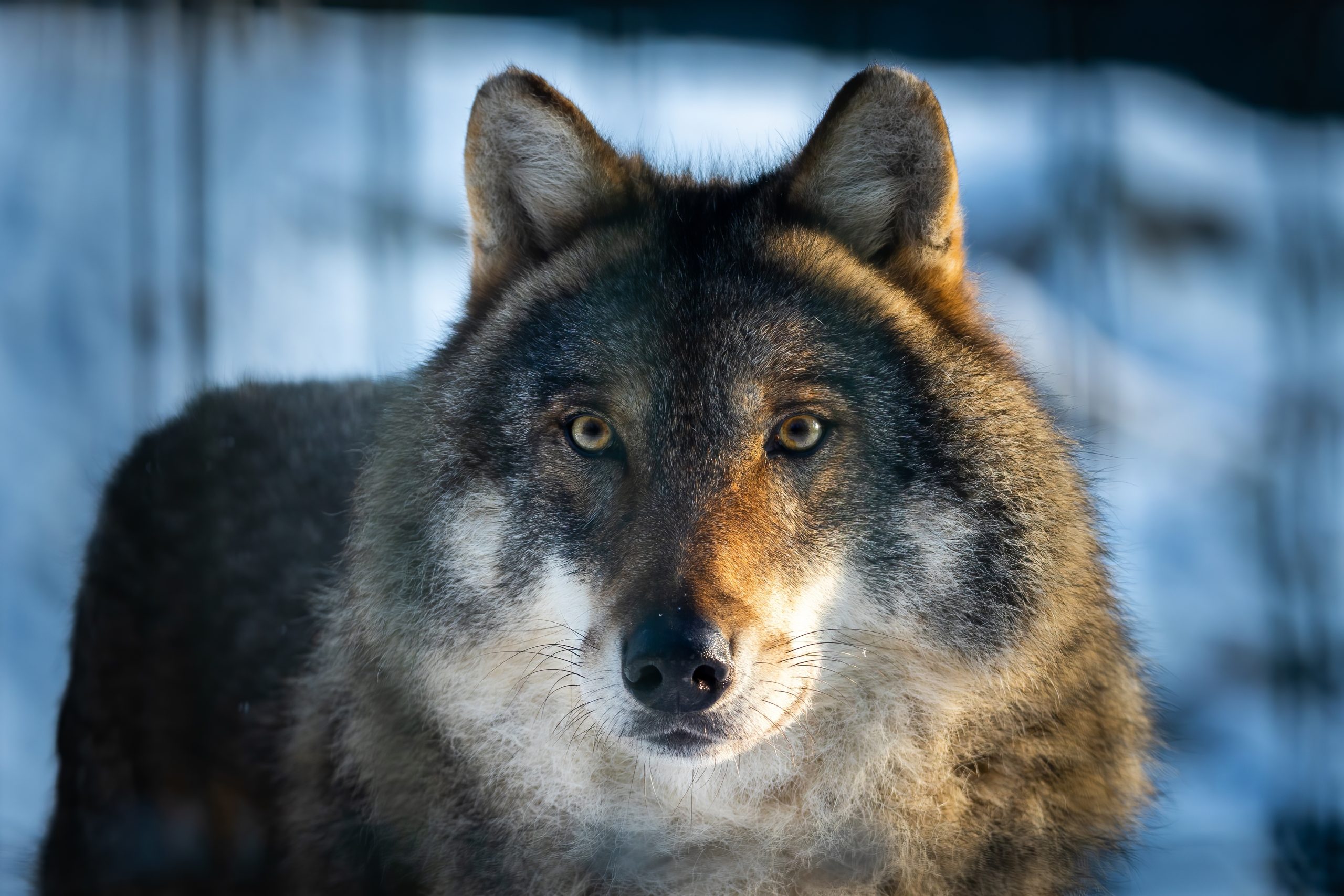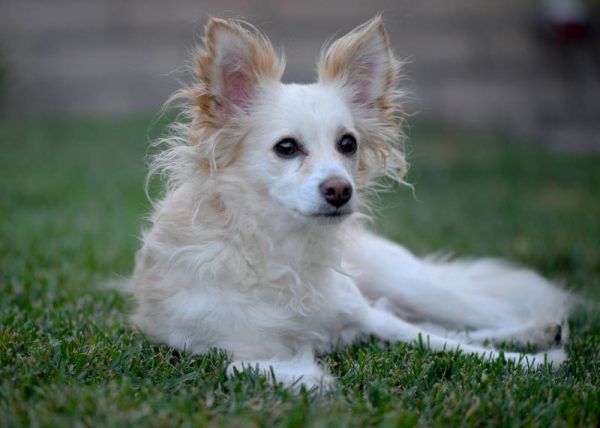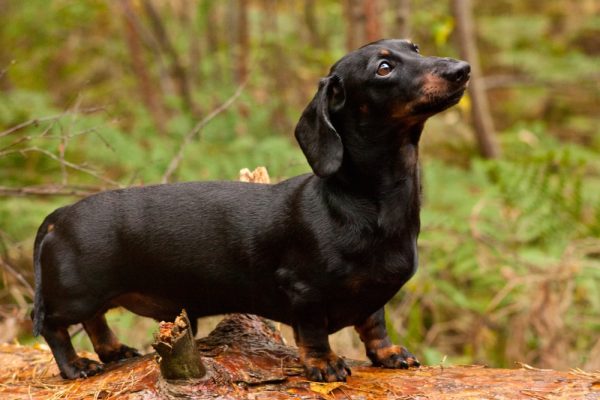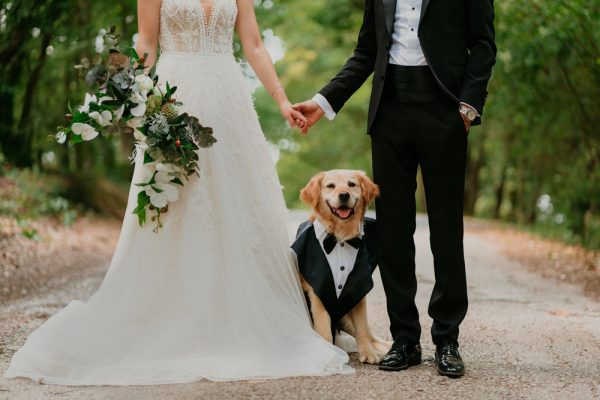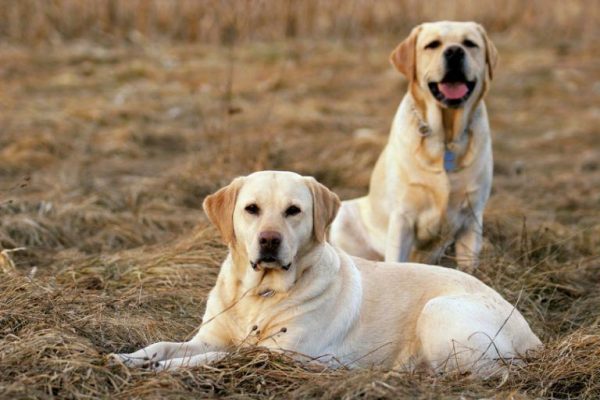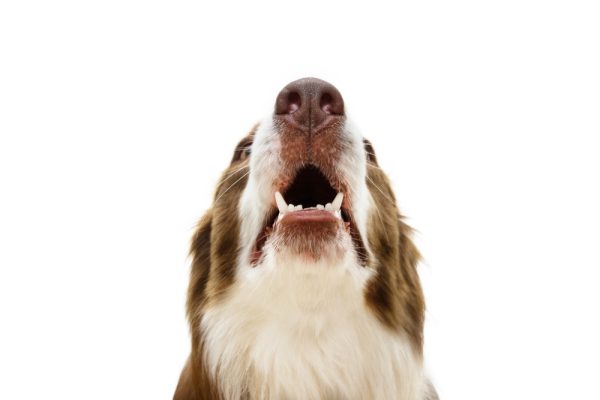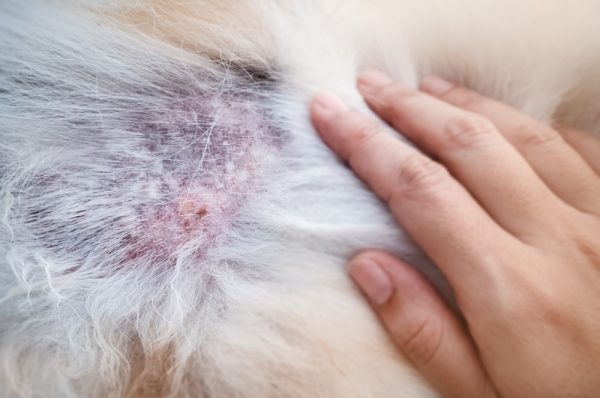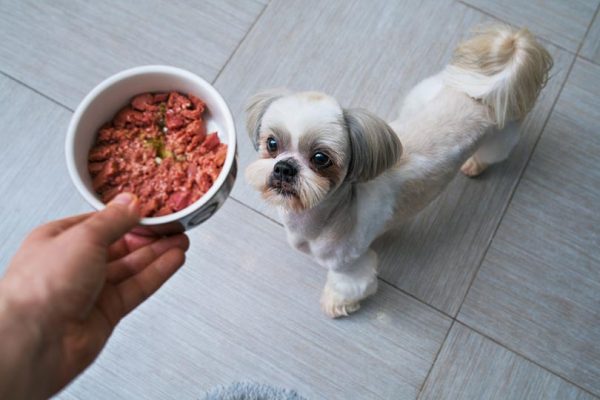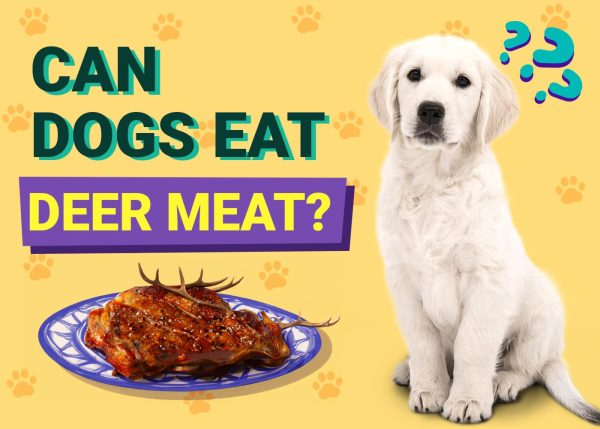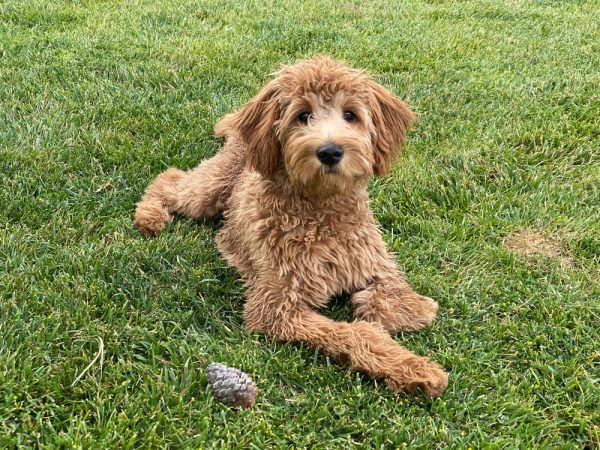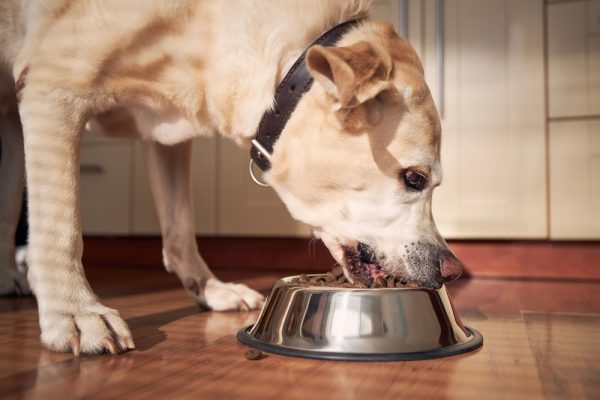In this article
Admit it; at one time or another, you have fantasized about training your own dragon, flying high on a Hippogryph, swimming with mermaids, and if you’re a fan of Game of Thrones, you might have wondered what it would be like to get up close and personal with a dire wolf. You may have even wondered if these impressive creatures are real.
Although you won’t be able to meet one, dire wolves are actually real; or at least, they were. We’re going to take a closer look at the dire wolf dog and find out how closely the facts inspired the fiction.

History of Dire Wolves
The dire wolf dog breed once roamed the wilds of the Americas, alongside saber-toothed cats, giant sloths, mammoths, and many other super-sized beasts of the last ice age, known as the Pleistocene epoch. Until recently, it had been assumed that they were the direct ancestor of the modern-day wolf; however, DNA research published in 2021 tells a different story.
Formerly classified as Canis dirus, scientists now believe that the dire wolf diverged around 6 million years ago, much earlier than previously believed, into a completely distinct, and now extinct, species, Aenocyon dirus.
Although the dire wolf’s time on Earth overlapped with that of several Canis species, including gray wolves and coyotes, there is no evidence of interbreeding, solidifying their status as a genetically distinct species.
Paleontologists have been able to piece together quite a lot about these ancient creatures from their fossilized remains, but what is not entirely clear is how or why, around 10–16,000 years ago, they became extinct. Around 3,600 dire wolf fossils have been found in the La Brea tar pits in California (more than any other mammal remains in that location), but what brought them to their sticky end in such great numbers remains a mystery. Perhaps the unfortunate creatures already trapped in the tar seemed like an easy meal, luring more and more unsuspecting dire wolves to their death.
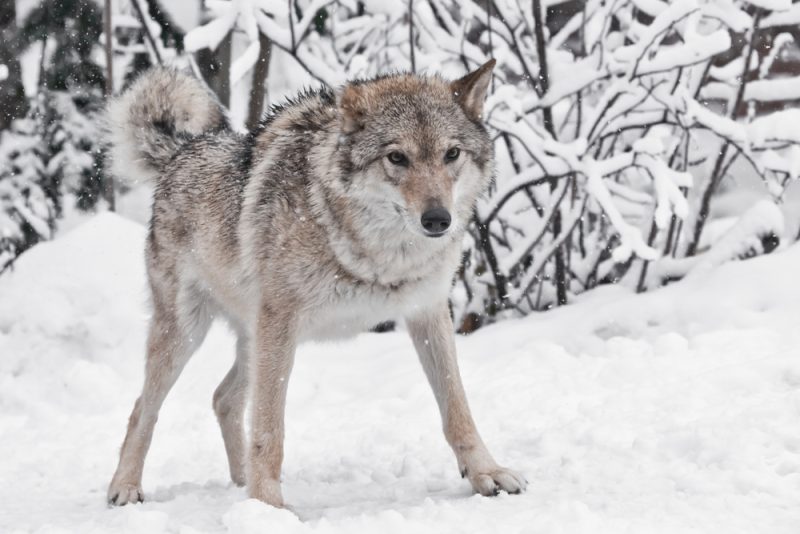
Dire Wolf Statistics
| Species | Aenocyon dirus |
| Family | Canidae |
| Time | Pleistocene epoch: 2.6 million years ago to 11,000 years ago |
| Distribution | The entire North American continent, from Canada to South America |
Dire Wolf Extinction
There are a number of theories about the extinction of the dire wolves. Some believe that as the giant, cumbersome herbivores of the ice age were succeeded by their smaller and more agile descendants, these larger predators were neither able to catch enough food nor compete with the faster, more compact wolves that had evolved alongside them. And being unable to interbreed with the smaller wolf species, the large dire wolf gradually dwindled into extinction.
Another theory is based on the coincidental timing of the arrival of humans on the American continent 14,000 years ago, around the same time that the dire wolf disappeared. However, as there is no solid evidence of whether or not humans hunted the mighty beasts, we can only speculate about the possible role humans played in the extinction of the dire wolf.
The Dire Wolves of Westeros
An important symbol in the George R. R. Martin epic, A Song of Fire and Ice, the dire wolf represents the strength and resilience of House Stark of Winterfell, wardens of the North. At the start of the series, we are introduced to the five legitimate children of Lord and Lady Stark: Robb, Sansa, Arya, Bran, and Rickon, as well as Lord Eddard Stark’s (supposed) bastard son, Jon Snow. The Starks happen upon the fallen body of a female dire wolf, who had met her end at the pointy end of a stag’s antlers, leaving behind five gray-brown dire wolf pups and one pure white pup—six dire wolf pups for six Stark children. What we don’t know at the time is that the dire wolf (Stark) being killed by a stag (Baratheon) is a portent of things to come.
It is mentioned that dire wolves had not been seen south of The Wall in years, their presence suggesting that Winter Is Coming, as are creatures from beyond the wall. However, we didn’t see a lot of evidence of dire wolves north of the wall either!
| The Fates of the Stark Dire Wolves | ||
| Ghost (Jon Snow) | Significant in several battles/attacks. Follows Jon back to The Wall. | |
| Grey Wind (Robb) | RIP | Killed at the Red Wedding alongside Robb. |
| Lady (Sansa) | RIP | Killed in place of Nymeria on the road to King’s Landing. |
| Nymeria (Arya) | Wild, leading a wolf pack, protected Arya. | |
| Summer (Bran) | RIP | Killed protecting Bran from the Night King’s army. |
| Shaggydog (Rickon) | RIP | Killed by House Umber as a gift to Ramsay Bolton. |
While it seemed initially that the fates of the Stark dire wolves would have more significant symbolism to the storylines and outcomes of the various Stark children, this didn’t necessarily come to pass.
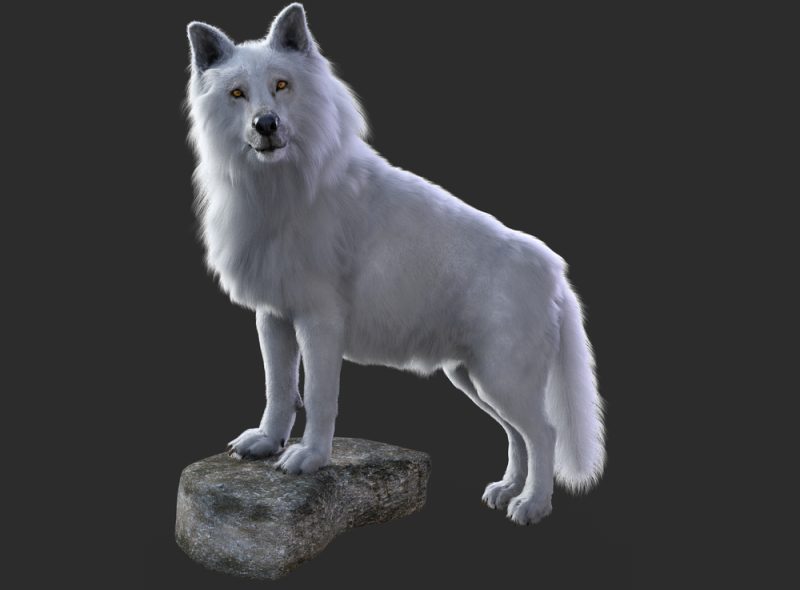
The Real Dire Wolves of Game of Thrones
In the HBO series, we see the dire wolves in a range of ages and settings, some using real dogs and wolves, while other times, CGI does the heavy lifting.
In the first season, the juvenile dire wolves were largely portrayed by Northern Inuit Dogs from Mahlek kennels in Newark, UK. Despite its name, the Northern Inuit breed was actually founded in Britain in the 1980s, using a number of breeds including the Siberian Husky, Malamute, and German Shepherd to create a dog that has a wolf-like appearance in a more trainable, family-friendly package. The Northern Inuit Dog is not recognized as a specific breed by any major kennel club organizations, but this may change over time.
As the series progressed, the older and much larger dire wolves were portrayed using a combination of forced perspective camera angles to make them look larger compared to the human cast members, as well as special effects. Ghost, who had the most screen time in the later seasons of the show, was played by a real-life Arctic wolf named Quigley.
Fun fact: Sophie Turner, who played Sansa Stark, actually adopted Zunni, the Northern Inuit Dog who played her dire wolf, Lady.
The Trouble With Dire Wolves
It is inevitable that when a particular breed of dog makes it big in Hollywood, fans who have fallen in love with the on-screen depiction want to have one of their own. Obviously, owning a dire wolf is out of the question. We’ve missed that boat by about 10,000 years, but wolf-like breeds like the Northern Inuit, Siberian Husky, and Malamute experienced a surge in popularity when Game of Thrones started airing. These are wonderful, gorgeous dogs, but they are not breeds that will suit all families, and they are not ideal for inexperienced owners.
Most wolf-like dog breeds have some very wolf-like temperaments, particularly their need for a lot of mental stimulation, strong leadership, lots of space, and some serious exercise. Breeds that strongly identify with pack behavior need clear rules and boundaries to understand their role in a family. Without this, they can become stressed and frustrated, which can manifest as anxiety, destructive behavior, and aggression.
More worrying is the increased interest in owning a wolfdog, a hybrid mix of wolf (Canis lupus) and domestic dog (Canis lupus familiaris). These dogs are legal in some parts of the country and on the banned list in others, and there is no approved rabies vaccine for wolfdogs. And if you think that Huskies can be challenging pets, try sharing your home with a 100-pound dog with predatory instincts and a reluctance to follow commands. These hybrids do not make good pets, and most families and homes would not be able to meet their needs.
When choosing a dog, the most important things to consider are the size of your home, how much time and energy you have to spend on your dog, how confident you are with training and leading a dog, and how well certain dogs will fit in with your family. The lowest items on your list should be looks and fame. Unfortunately, some breeders will take advantage of the increased visibility created by a famous canine and may not always be forthcoming with the challenges involved with some breeds.
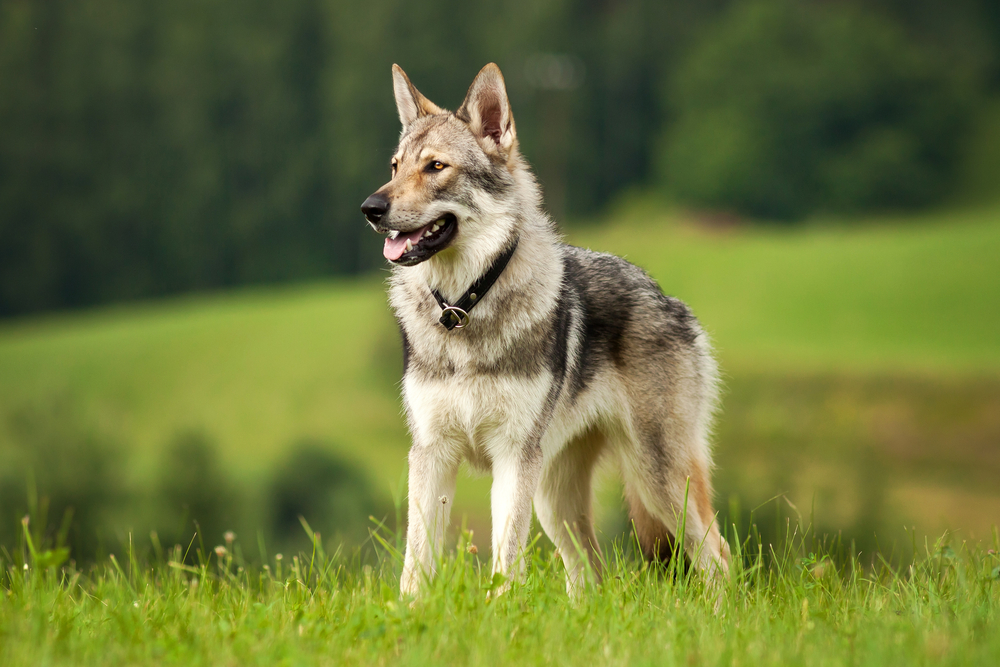

Final Thoughts: Dire Wolf Facts and Fantasy
You may have been surprised to learn that the Game of Thrones dire wolves are not purely fictional. It must have been quite a sight to see these enormous canines running across the plains in pursuit of bison, sharing their world with giant mammoths and super-sized cats. While it’s too late for us to meet a real dire wolf, the Stark dire wolves were often portrayed by dog breeds that are commonly kept as pets.
If you are tempted by the prospect of living with your own Game of Thrones canine, there are several breeds that might help you fulfill that fantasy. Just remember that the more a dog looks like a wolf, the more likely it is that they will think like one too! So, if you’re new to dog ownership, you might want to start with something a little easier to train, but if you are looking for a canine companion with energy, intelligence, and a coat to die for, perhaps a Northern Inuit is right up your alley!
Featured Image Credit: Szczepan Klejbuk


